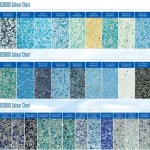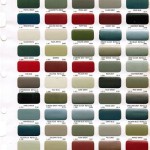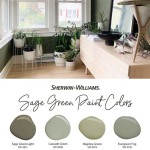Living Room Paint Colors To Transform Your Spaces
The living room serves as a central hub in many homes, a space for relaxation, entertainment, and connection. Its design, particularly the color palette, significantly influences the overall ambiance and mood. Selecting the right paint colors can transform a living room from a drab and uninspiring space into a welcoming and aesthetically pleasing environment. A thoughtful approach to choosing paint colors involves considering factors such as room size, natural light, existing furniture, and desired atmosphere. This article explores various paint color options and provides guidance on how to utilize them effectively to revitalize living room spaces.
Understanding the psychology of color is crucial when selecting paint colors for any room, including the living room. Different colors evoke different emotions and can impact how occupants feel within the space. Warm colors, such as reds, oranges, and yellows, tend to create a sense of energy and warmth. Cool colors, such as blues, greens, and purples, often promote feelings of calmness and serenity. Neutral colors, like grays, beiges, and whites, offer versatility and can serve as a backdrop for bolder accents. The optimal color choice depends on the intended function of the living room and the desired emotional response.
The Power of Neutral Palettes
Neutral paint colors are a popular choice for living rooms due to their adaptability and timeless appeal. They provide a foundation that can be easily complemented by a variety of furniture styles, art, and accessories. Furthermore, neutral colors tend to make smaller rooms appear larger and brighter by reflecting light effectively. Within the spectrum of neutral hues, several options offer unique advantages.
White is a classic and universally appealing neutral. It creates a clean and fresh atmosphere, making it ideal for modern and minimalist designs. However, it is important to consider the undertones of white paint. Some whites have warm undertones (yellow or pink), which can create a cozy feel, while others have cool undertones (blue or gray), which can create a more contemporary look. Off-white shades, such as cream or ivory, are also excellent choices for those seeking a slightly warmer and softer alternative to pure white.
Gray has gained significant popularity in recent years as a sophisticated and versatile neutral. It ranges from light and airy grays to deep and dramatic charcoal shades. Light grays can create a serene and elegant backdrop, while darker grays add depth and visual interest. Gray pairs well with a variety of accent colors, including blues, greens, yellows, and even metallics.
Beige is a warm and inviting neutral that offers a sense of comfort and relaxation. It is a versatile choice that complements a wide range of furniture styles and color schemes. Beige can be particularly effective in creating a cozy and inviting atmosphere, especially when paired with natural materials like wood and stone.
Greige, a blend of gray and beige, combines the coolness of gray with the warmth of beige. This hybrid neutral is a highly adaptable choice that works well in a variety of lighting conditions and with different furniture styles. Greige is a sophisticated and versatile option that provides a balanced and harmonious backdrop for living room spaces.
Exploring Bold and Vibrant Colors
While neutral colors offer versatility and timelessness, bold and vibrant colors can add personality and energy to a living room. These colors can be used selectively to create focal points, highlight architectural features, or simply inject a dose of vibrancy into the space. It is important to use bold colors judiciously, as they can be overwhelming if used excessively.
Blue is a versatile color that can range from calming and serene to bold and dramatic. Light blues, such as sky blue or powder blue, can create a tranquil and airy atmosphere, making them ideal for relaxation areas. Darker blues, such as navy or indigo, can add depth and sophistication to a living room. Blue pairs well with a variety of accent colors, including whites, grays, yellows, and oranges.
Green is a refreshing and natural color that evokes feelings of tranquility and harmony. Light greens, such as sage or mint green, can create a calming and inviting atmosphere, while darker greens, such as emerald or forest green, can add richness and depth. Green pairs well with natural materials like wood and stone, as well as with other natural colors such as browns and beiges.
Yellow is a cheerful and energetic color that can brighten up any living room. Light yellows, such as pastel yellow or lemon yellow, can create a warm and inviting atmosphere, while brighter yellows can add a pop of energy. Yellow pairs well with neutral colors like white and gray, as well as with other complementary colors like blue and purple.
Orange is a warm and inviting color that evokes feelings of energy and enthusiasm. It can be used to create a cozy and inviting atmosphere or to add a pop of color to a neutral space. Terracotta, a muted shade of orange, offers an earthy and sophisticated feel. Orange pairs well with neutral colors like white and gray, as well as with other complementary colors like blue and green.
Red is a bold and dramatic color that can add a touch of luxury and sophistication to a living room. It should be used with caution, as it can be overwhelming if used excessively. Deep reds, such as burgundy or crimson, can create a warm and inviting atmosphere, while brighter reds can add a pop of energy. Red pairs well with neutral colors like white and gray, as well as with other complementary colors like gold and black.
Techniques for Color Application
The way paint is applied can significantly impact the overall look and feel of a living room. Different painting techniques can be used to create visual interest, highlight architectural features, or even make a room appear larger or smaller. Consider the following techniques for color application:
Accent Walls: Painting one wall in a bold or contrasting color can create a focal point and add visual interest to a living room. Accent walls are particularly effective in rooms with architectural features, such as fireplaces or large windows. The color of the accent wall should complement the other colors in the room and the overall design style.
Two-Tone Walls: Dividing a wall into two sections with different colors can create a unique and visually appealing effect. This technique is particularly effective in rooms with high ceilings, as it can help to visually lower the ceiling height. The two colors should complement each other and the overall design style.
Color Blocking: Using geometric shapes or blocks of color can add a contemporary and artistic touch to a living room. This technique is particularly effective in modern and minimalist designs. The colors used should be bold and contrasting to create a visually striking effect.
Ombre Walls: Creating a gradient effect, where the color gradually fades from light to dark, can add a subtle and sophisticated touch to a living room. This technique is particularly effective in creating a serene and calming atmosphere. The colors used should be similar in tone to create a smooth and seamless transition.
Stenciling: Using stencils to create patterns or designs on a wall can add a unique and personalized touch to a living room. This technique is particularly effective in adding texture and visual interest to a plain wall. The colors used should complement the other colors in the room and the overall design style.
Ultimately, the selection of paint colors for a living room is a personal decision that should reflect individual preferences and the desired atmosphere. By carefully considering the factors outlined in this article, individuals can make informed choices that will transform their living spaces into welcoming and aesthetically pleasing environments.

55 Best Living Room Paint Colors From Designers
:strip_icc()/cdn.cliqueinc.com__cache__posts__261477__small-living-room-paint-colors-261477-1529967319237-image.700x0c-4c6e6bd8e8214a9786d2b8045f6dbdf4.jpg?strip=all)
10 Best Paint Colors For Small Living Rooms

50 Best Living Room Paint Ideas Colors

55 Best Living Room Paint Colors From Designers

30 Living Room Paint Colors Inspiration For An Inviting Space Benjamin Moore

Bright Paint Color Ideas To Consider Forbes Home

50 Best Living Room Paint Ideas Colors

30 Living Room Paint Colors Inspiration For An Inviting Space Benjamin Moore
:strip_icc()/cdn.cliqueinc.com__cache__posts__261477__small-living-room-paint-colors-261477-1529967321524-image.700x0c-9b26e5add14347c8afccb7ec90432aab.jpg?strip=all)
10 Best Paint Colors For Small Living Rooms

How To Change The Size Of Your Room With Paint Paintzen
Related Posts








